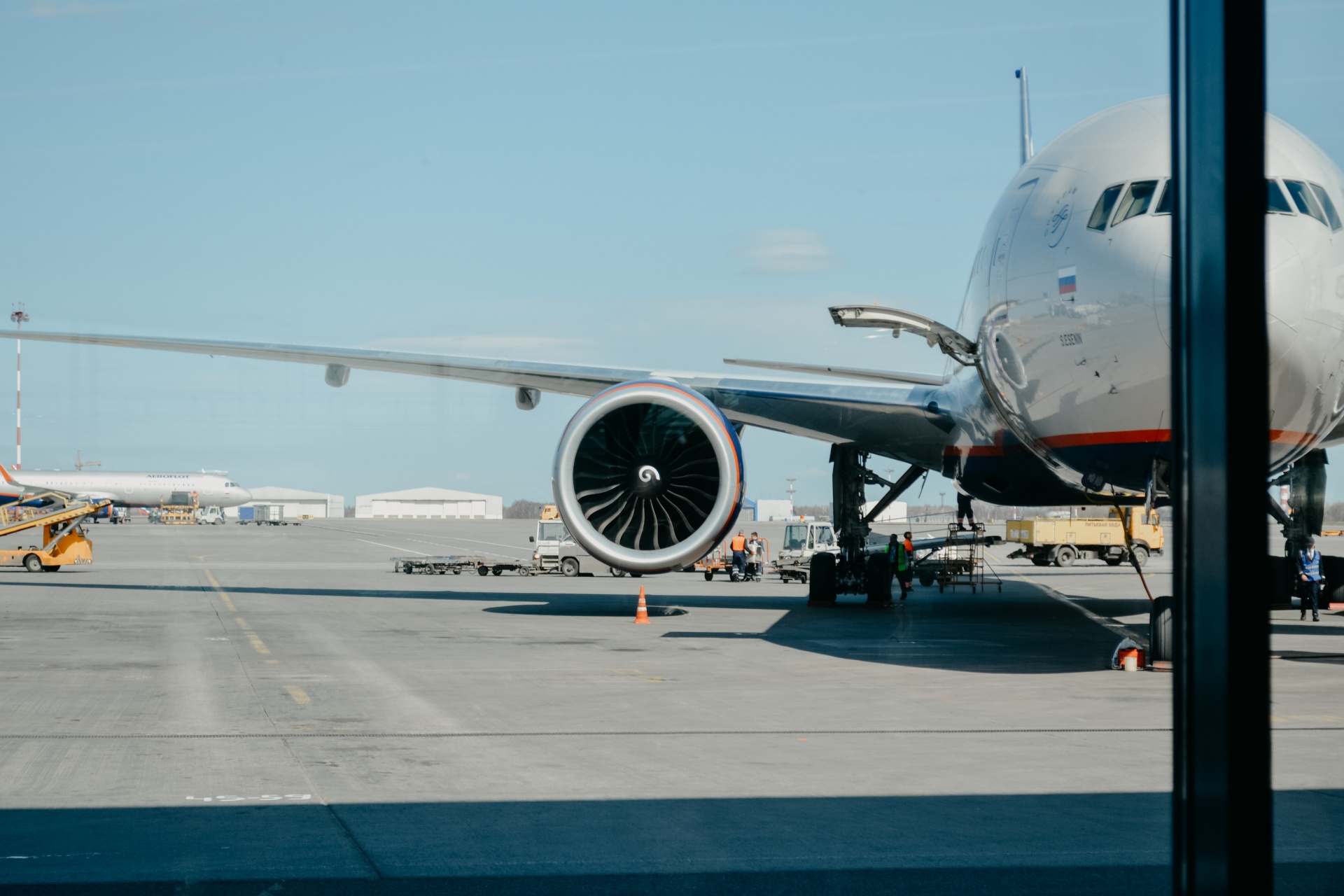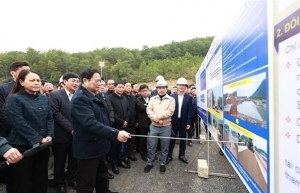Overloaded airport infrastructure in Vietnam limits domestic aviation growth
 |
Speaking at a symposium on Mobilising Resources for Airport Infrastructure Development organised by the Government Electronic Portal on June 23, Nguyen Anh Dung, Deputy Head of the Investment Planning Department at the Ministry of Transport (MoT), revealed that the designed capacity of Vietnam's airports is only 95 million passengers per year, while the actual passenger throughput had already reached 116.5 million in 2019.
"Therefore, the number of passengers has exceeded the capacity by about 20 million, resulting in overloaded infrastructure at certain airports including Tan Son Nhat, Noi Bai, Cam Ranh, and Danang," Dung stated.
From 2011 to 2020, Vietnam's aviation sector experienced significant growth, averaging 16-18 per cent annually. The International Air Transport Association recognised this as the fastest aviation growth rate in Southeast Asia and the fifth fastest globally.
However, airport infrastructure development has not kept pace with the industry's growth. The funding for these airports mainly comes from the state budget and state-owned enterprises. Currently, there are 21 airports operating with investment from the state budget or as state-owned enterprises. Van Don Airport is the only project that has attracted public-private partnership (PPP) investment.
During the recent period, investments in airport infrastructure have reached $4.1 billion, with approximately 13.5 per cent coming from the state budget. The remaining funds are provided by the Airports Corporation of Vietnam (ACV), a state-owned enterprise, and the PPP investment for Van Don Airport.
Dr. Luong Hoai Nam, a member of the Tourism Advisory Board, highlighted that in addition to Van Don, there are other socialised projects within airports such as Vinh Airport in Nghe An, Phu Cat Airport in Binh Dinh, and Thanh Son Airport in Ninh Thuan.
"These are places where localities are highly interested in promoting the socialisation of airport infrastructure to drive local socioeconomic development, especially in terms of tourism," Nam stated.
However, administrative and investment procedures are still relatively new, and investors and localities are unfamiliar with the implementation process, resulting in a halt in progress after an initial period of exploration.
Currently, Van Don Airport is the only fully socialised airport, along with two socialised terminal projects at Danang International Airport and Cam Ranh International Airport.
In many countries, the concept of socialising airport infrastructure is widely practised, with common models found in Europe and the United States. In the UK, for instance, the government initially invests in airports and subsequently divests its ownership. Currently, British Airways manages only one airport, Heathrow.
Meanwhile, Russia adopts a leasing approach for its airports. The government owns the airports and leases them to private entities. Moscow, for example, is home to three major airports, Sheremetyevo, Domodedovo, and Vnukovo. Presently, the state retains ownership of Sheremetyevo, while Domodedovo and Vnukovo are leased to private entities for a period of 30 years, similar to property leasing.
In India, the two largest airports, New Delhi and Mumbai, follow a concession model. Ownership and management rights are granted to a conglomerate with a combination of foreign and domestic ownership, involving multiple stakeholders in the management process.
Adjacent to Vietnam, Cambodia has also implemented a concession model. All three international airports in Cambodia have been leased to the French conglomerate ADP.
Thus, when discussing the concept of socialising airport infrastructure, there are numerous approaches to consider.
Key issues to clarify for airport socialisation
According to Nam, three main issues need to be clarified for the socialisation of airport infrastructure in Vietnam – land relations, airport infrastructure, and the handling of assets by the ACV.
"The land regulations are clear. The ACV's relationship with the land will dictate how private investors interact with the government, as land ultimately belongs to the state," stated Nam.
The issue of airport infrastructure is more complex. Currently, the MoT, as the representative of the owner, has assigned the entire airport infrastructure to the ACV for management and operation, without granting concessions or allowing leasing.
"However, when we implement the socialisation of airport infrastructure, as in the cases of Vinh, Phu Cat, and Thanh Son, it cannot be free of charge. There needs to be a certain relationship regarding state-owned airport infrastructure," added Nam.
Additionally, in terms of fairness, the relationship between the ACV and airport infrastructure, as well as that between investors and the infrastructure, during the socialisation process should follow a consistent formula, according to the expert's assessment.
The most challenging issue in airport socialisation lies in the handling of the ACV's assets at the airports. In the most recent report sent by the MoT to deputy prime minister Tran Hong Ha, two options were presented. The first is a complete divestment of the ACV from these airports, while the second option suggests that the ACV remains and becomes the controlling shareholder in the socialised airports.
"I believe that the second option should be avoided, as it is unlikely that private enterprises would provide funds to the ACV for it to dominate airport development projects. The best option is for the ACV to divest its ownership, allowing private investors and joint ventures to participate in operation and management. However, there must still be a transparent and detailed approach to handling their assets to prevent loss and ensure clarity," said Nam.
"Focusing on addressing these issues will help finalise the MoT’s plan. Once approved by the Politburo and signed by the prime minister, relevant ministries, local authorities, and investors will know how to proceed with the socialisation of aviation infrastructure. Without these resolutions, we will only be left with discussions and debates," he concluded.
 | Vietnam eager to complete integral transport infrastructure to attract FDI Local authorities at all levels are eager to implement construction of transport infrastructure up and down the country. |
What the stars mean:
★ Poor ★ ★ Promising ★★★ Good ★★★★ Very good ★★★★★ Exceptional
Related Contents
Latest News
More News
- Main drivers for Vietnam’s digital economy future (December 03, 2025 | 11:35)
- Pivotal stage of growth paves way for rise in M&As (December 03, 2025 | 10:00)
- Positive projections for M&A interest from Thailand (December 03, 2025 | 09:40)
- Manifesting the first line of defence in cybersecurity (December 03, 2025 | 09:00)
- The transformational role AI can play in accounting arena (December 03, 2025 | 08:00)
- Unlocking 5G-AI potential in Singapore (December 03, 2025 | 08:00)
- Data-driven strategies vital for a fast-evolving nation (December 02, 2025 | 09:41)
- Policy to practice: how Vietnam can lead the region (November 26, 2025 | 16:03)
- Mobilising private capital at scale vital for climate battle (November 26, 2025 | 15:36)
- VILAF and Yoon & Yang launch Vietnam - Korea Practice Unit (November 26, 2025 | 15:16)

 Tag:
Tag:




















 Mobile Version
Mobile Version